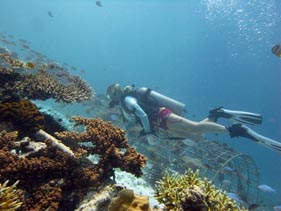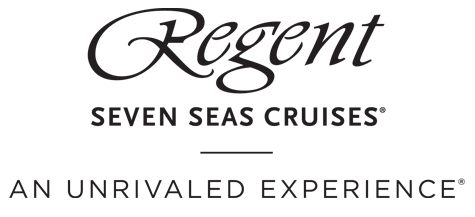Coral reef given new life

Dead coral reef will be reborn by Indonesia’s acclaimed artist Teguh Ostenrik, who will "electrify" his metal sculptures with a revolutionary scientific process
A dead coral reef in the tropical waters off Lombok’s Senggigi Beach will be given new life starting May 23 by Indonesia’s acclaimed artist Teguh Ostenrik, who will "electrify" his metal sculptures with a revolutionary scientific process that turns dissolved minerals in seawater into Biorock, or "seament."
A collaborative effort of the Lombok Hotel Association (LHA) and Indonesian Marine Affairs and Fisheries (KKP), with support by Indonesian-based Gili Eco Trust, the project with its planned on-going art installations, is being described as "an underwater art gallery" that will eventually extend the length of Senggigi Beach, Lombok’s popular visitor destination. The artist himself calls it an "Art-e-fish-al" reef park, a gentle ocean floor for viewing art while snorkeling and diving amongst marine life.
"I dove that reef for years for its abundance of shrimp and squid and lobster," said Teguh Ostenrik, the project’s inspiration and founder. "The I hadn’t been for a few years while in Europe and when I came back, the reef was sadly a lifeless desert. This project allows me to have a part in revitalizing the lost coral and to do it through my art."
Using scrap steel salvaged from various sources around Lombok, Teguh has created two-meter-high sculptures that will be anchored to the reef rubble and connected to a low-voltage electrical current generated from a floating solar panel. "This will cause minerals in the water to form and adhere to the sculpture," said Delphine Robbe, reef restoration specialist at Gili Eco Trust, a consultant for the project. "Live coral fragments are then transplanted from other reefs and because the Biorock is so similar to natural coral reef material, a new garden grows, often at two to six times the rate of a natural reef."
She adds, "The electrical current is what attracts the marine life. All those artificial reefs using everything from airplanes to ships to old railroad cars have proven to be a disappointment, rusting away and polluting the sea. Sculptures were used in Mexico’s massive Mesoamerican Reef some years ago as an example, but all they seemed to attract were sponges and algae. The electrification is the key. And it is completely safe for swimmers and marine life."
The project is hailed as not just eco-friendly, but also something that will support Lombok’s fast-growing visitor industry.
"Indonesia has the world’s highest coral reef biodiversity and only six percent is still in a pristine state. The reasons for the loss are many, from fishing with dynamite to global warming. So it’s a matter of corporate responsibility to do something about that when provided the opportunity. When a natural forest or ocean or river provides for you and then threatened, you better do everything you can to give back."
Teguh, the son of a policeman born in 1950 in Jakarta and one of the few Indonesian artists to exhibit widely in galleries from the Netherlands to Japan, made his first visit to Lombok in 1984 after living 10 years in Germany. At that time, Senggigi Beach was famous as a habitat for shrimp and squid. Its disappearance, he said, contributed to his use of scrap metal as an expression of his belief in recycling.
Teguh said the first of his art pieces will be positioned off the beach from de Quake restaurant, located approximately midway along Senggigi Beach. In order for the project to grow as it should and maintain a desired aesthetic as any other quality gallery, Teguh is looking for a qualified curator to help decide which pieces complement the park, from both local and international artists.
This week’s Vision special FREE offer HERE
 United Kingdom
United Kingdom United States
United States Asia Pacific
Asia Pacific












































Dozens fall ill in P&O Cruises ship outbreak
Boy falls to death on cruise ship
Turkish Airlines flight in emergency landing after pilot dies
Unexpected wave rocks cruise ship
Woman dies after going overboard in English Channel